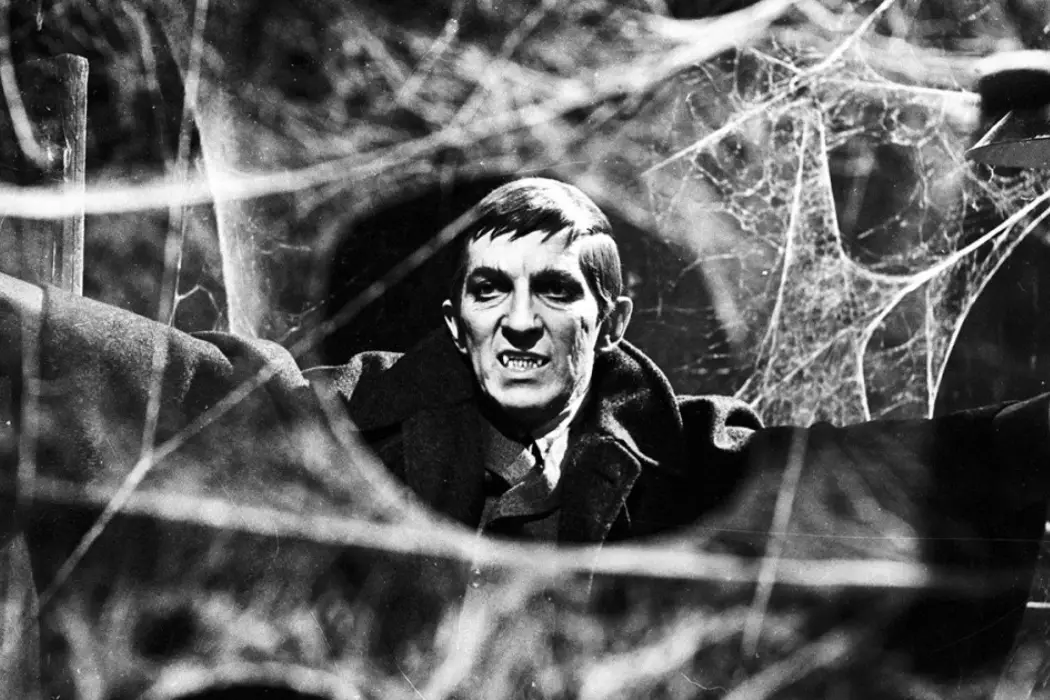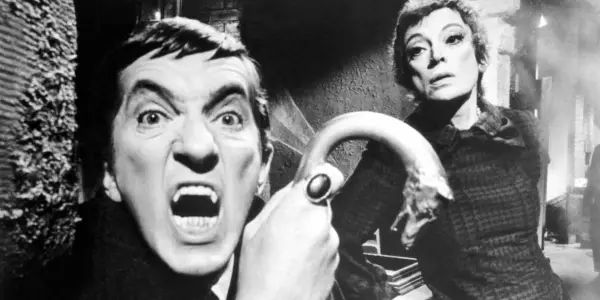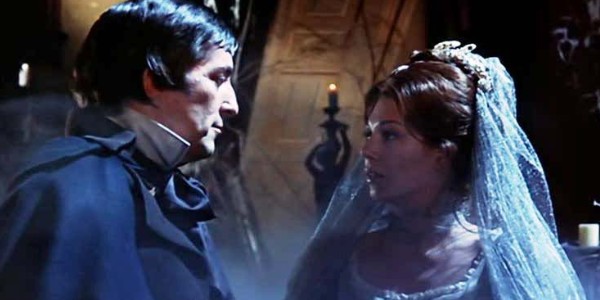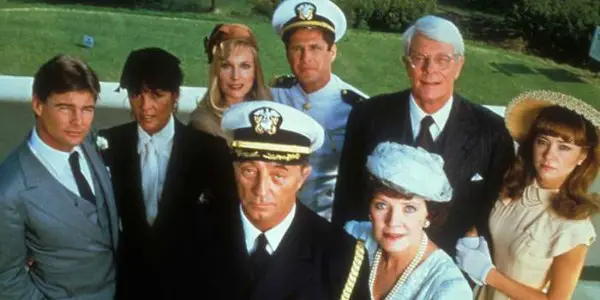MASTER OF DARK SHADOWS: Engaging Tribute To TV Auteur Dan Curtis

Jim Dixon retired from practicing law not a moment too…
You can’t plan a cult hit anymore than you can predict collectibles. No one knew that vintage Barbies or mint condition copies of Action Comics No. 1 were going to be valuable when they first appeared. And no one would have predicted that nearly fifty years after its cancellation, the comparatively short-lived daytime soap Dark Shadows would still be a hot commodity.
David Gregory’s feature-length documentary, Master of Dark Shadows, reveals the largely unknown history, far-reaching impact and lasting appeal of Dark Shadows while also exploring the dramatic talents of creator-producer-director Dan Curtis. Known as the “King of TV Horror,” the Emmy-winning filmmaker followed Dark Shadows with other iconic genre favorites including The Night Stalker, Trilogy of Terror and the feature films House of Dark Shadows and Burnt Offerings before earning accolades for the epic miniseries The Winds of War and War and Remembrance.
From televised golf to…DARK SHADOWS?
Dan Curtis did not start out with the intent to create television programs or movies, and he didn’t have the background for it. Following his graduation from Syracuse University in 1950, Curtis went to Chicago with the intent of carving out a career in sales. What he ended up selling was syndicated television programming, and like others who have found themselves in the business and marketing end of that industry, came to the conclusion that he could create better product himself.
It turned out he was probably right.

His first successful pitch resulted in a golf show, which had a creditable run. But Curtis’ mark on television would not be primarily etched in sports programming. He developed a bull in a China shop sort of reputation, but he was a man who knew how to get things done. Writers were terrified of him – actors loved him. 1966 saw the premiere of a new daytime soap opera on ABC – one which would change television forever and create a pop culture legacy. Dark Shadows started out simply as a gothic soap without any particular supernatural overtones. In an attempt to bolster flagging ratings, the show introduced a new character, Barnabas Collins, a 175-year old vampire played by Jonathan Frid, who proved to be a game-changer. Originally intended for only a 13-week run, Barnabas quickly became the show’s most popular character.
Coffins are chained shut for a reason
Barnabas Collins was a unique character in a number of ways. Up until then the only vampires to be found on TV were in old horror movies aired on late night TV on Saturdays. Vampires were not stars on daytime television. Barnabas Collins stood out in several other ways. A cheesy, watered-down Dracula was the model for most movie vampires – cape-wearing aristocrats with foreign titles who slept in coffins and spoke with indeterminate, Eurotrash accents. Barnabas wore a modernized cape, notably not an opera cape, but only as outerwear. Indoors he wore twentieth century business suits, and there was neither noble title nor foreign accent. Barnabas Collins was an all-American vampire who had been chained in a coffin before the signing of the Declaration of Independence. He was accidentally released in the twentieth century by Willie Loomis (John Karlen), who was on an ill-advised search for the long-missing Collins family jewels.
It’s been said before, but bears repeating: Coffins are chained shut for a reason.
The thing is, despite his sanguinary dietary preferences, Barnabas was more or less a good guy. He felt remorse for his actions, and soon everyone was drawing drug addict parallels – which only increased his counterculture cred in the late sixties. In an age of increased appreciation of the antihero, a vampire fit right in.
Vampire antihero for the psychedelic sixties
The vampire antihero soon became a veritable superhero. As Dark Shadows became more and more popular with an ever-younger audience, Dark Shadows made successful forays into the still-infant field of collateral marketing. As the show was moved from a morning airtime to afternoons to get the kids after school, Jonathan Frid‘s befanged face graced comic books based on the show, lunch boxes and bubble gum trading cards.
The documentary also includes conversations with celebrity Dark Shadows fans, how the show became a phenomenon with the youth of the nation and the merchandise boom, and its legacy including the 90s television remake and the ill-conceived, if visually spectacular, big-budget, Tim Burton feature Dark Shadows.
Curtis is quoted by original Dark Shadows star Kathryn Leigh Scott, among others in the documentary, as saying that he assumed that Dark Shadows episodes would be seen – once – by an audience of housewives and disappear. Yet Dark Shadows continues to be seen in syndication, on Blu-ray and DVD.

“See how the vampires do it”
Curtis found that the more spectacularly you succeed at something, the more the powers that be want you to do more of the same. While Dark Shadows was still on the air, Curtis directed a feature film version of the property, House of Dark Shadows, using the original cast. The tagline for the posters and trailers, “See how the vampires do it,” emphasized the unavoidable eroticism of the vampire myth. The feature, which was also substantially bloodier than the TV show, was a surprise hit for MGM, and Curtis was now a movie director.
Following the cancellation of Dark Shadows, Curtis went on to direct and/or produce a number of other projects, including the feature films Burnt Offerings and Night of Dark Shadows, and the made-for-TV movies The Night Stalker and Trilogy of Terror, all of them horror. Curtis was beginning to feel restricted.
Narrated by Ian McShane, Master of Dark Shadows offers insights from Curtis himself, via archival footage in addition to both new interviews and archival footage featuring writer/producer Alan Ball (True Blood), screenwriter William F. Nolan, who wrote Curtis’ classic TV horror anthology Trilogy of Terror, Winds of War/War and Remembrance author Herman Wouk, veteran actors Whoopi Goldberg, Barbara Steele, who appeared in and co-produced the miniseries Winds of War and co-produced War and Remembrance, as well as playing Dr. Julia Hoffman on the Curtis-produced, prime-time remake of Dark Shadows, and Ben Cross, who played Barnabas Collins on the prime-time Dark Shadows remake. Original Dark Shadows stars Jonathan Frid, David Selby, Kathryn Leigh Scott, Lara Parker, John Karlen, Nancy Barrett, Jerry Lacy, Roger Davis, and other colleagues and family members are also heard from in both new and archival interviews.
Exposing the rough edges
Gregory exposes Dark Shadows’ rough edges with relish, and when you show a montage of flubs, goofs and snafus ad seriatum, the show looks less professionally produced than it actually was. The fact remains that on the tight production schedule mistakes did happen. Lines were blown, Styrofoam tombstones did rock when bumped into. It turns out that Jonathan Frid was dyslexic, and learning lines at the speed required by daytime drama was difficult for him.

But the documentary also celebrates Dark Shadows’ creativity and outrageousness, and its willingness to go in directions previously considered unthinkable. Mention is made that the writers “borrowed” plot lines from the pages of classic literary horror – the arrival of very popular bad boy Quentin Collins (David Selby) started out as a modern day take on Henry James’ The Turn of the Screw. Plots freely adapted from Frankenstein and The Strange Case of Dr. Jekyll and Mr. Hyde popped up. But Dark Shadows broke new ground on television with the addition of time travel to its ongoing plots, and shocked network executives by having their existing cast members play different characters in the past. This device provided, among other things, a popular plot arc detailing Barnabas Collins’ transition from mortal to vampire, thanks to the machinations of the vengeful, and very sexy, witch Angelique (Lara Parker). Being in the 19th century also allowed a now flesh-and-blood Quentin Collins to have dialogue, which sent his popularity through the roof. And while we’re at it, why not turn him into a werewolf?
In retrospect the popularity that the show has enjoyed since its cancellation in 1971 seems all but inevitable. Talk to people of a certain age and they’ll likely tell you how they raced home from school every day to watch Dark Shadows.
Dan Curtis, Herman Wouk and the biggest miniseries ever made
But it was not what Curtis wanted to be remembered for. He was a busy and successful producer during the rest of the seventies, though a lot of his output was horror, including made-for-TV adaptations of The Picture of Dorian Gray, Dracula and The Turn of the Screw. With the epic scale adaptations of Herman Wouk’s novels The Winds of War and War and Remembrance, Curtis finally got to really flex his muscles with massive productions involving location shooting on different continents, and themes of historical and dramatic significance. The documentary spends some time on these productions, though frankly they warrant a two-hour, behind-the-scenes documentary of their own. Among other things, Curtis was the first filmmaker given permission by the Polish government to shoot any part of a drama at Auschwitz. Curtis’ sequences depicting the Holocaust rival Steven Spielberg’s Academy Award winning work on Schindler’s List.
The two mammoth miniseries were between them commercial and critical successes. Winds of War was a ratings blockbuster; the lower-rated War and Remembrance was an Emmy and Golden Globe winner.
The miniseries were probably impossible acts to follow, and ironically, Curtis followed it with a prime time remake of Dark Shadows, shot on film. Ben Cross took over the role of Barnabas Collins, while Joanna Going and Ely Pouget respectively played Victoria Winters and Maggie Evans. The show was gorgeous to look at, and didn’t lack entertainment value. It suffered mortal ratings damage as a result of multiple preemptions during The Gulf War and was prematurely canceled.
Curtis‘ remaining work was comparatively minor, and he passed away in 2006.
Master of Dark Shadows: Conclusion
Even the title of Master of Dark Shadows aims the documentary squarely at the large and enthusiastic Dark Shadows audience, and this is the audience that is likely to enjoy it most. Nonetheless, this is an informative and engaging production. Dan Curtis was a fascinating and talented filmmaker, and Master of Dark Shadows helps fill an information void where he’s concerned.
Master of Dark Shadows released on DVD and VOD on April 16, 2019.
Does content like this matter to you?
Become a Member and support film journalism. Unlock access to all of Film Inquiry`s great articles. Join a community of like-minded readers who are passionate about cinema - get access to our private members Network, give back to independent filmmakers, and more.
Jim Dixon retired from practicing law not a moment too soon, and now works as a freelance writer and film critic. A lifelong and unrepentant movie geek, he firmly believes that everything you need to know in life you can learn at the movies. He lives in upstate New York.













